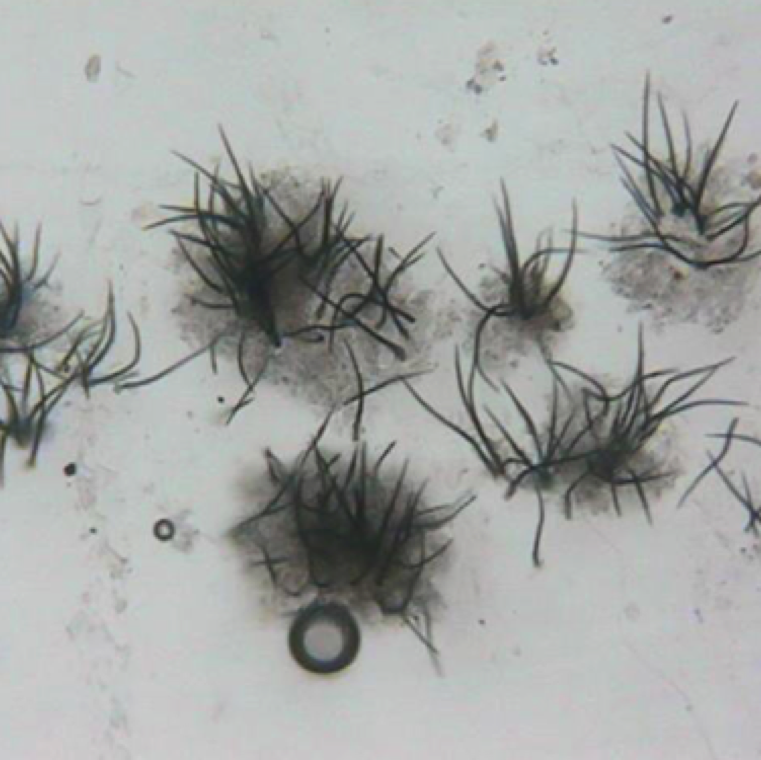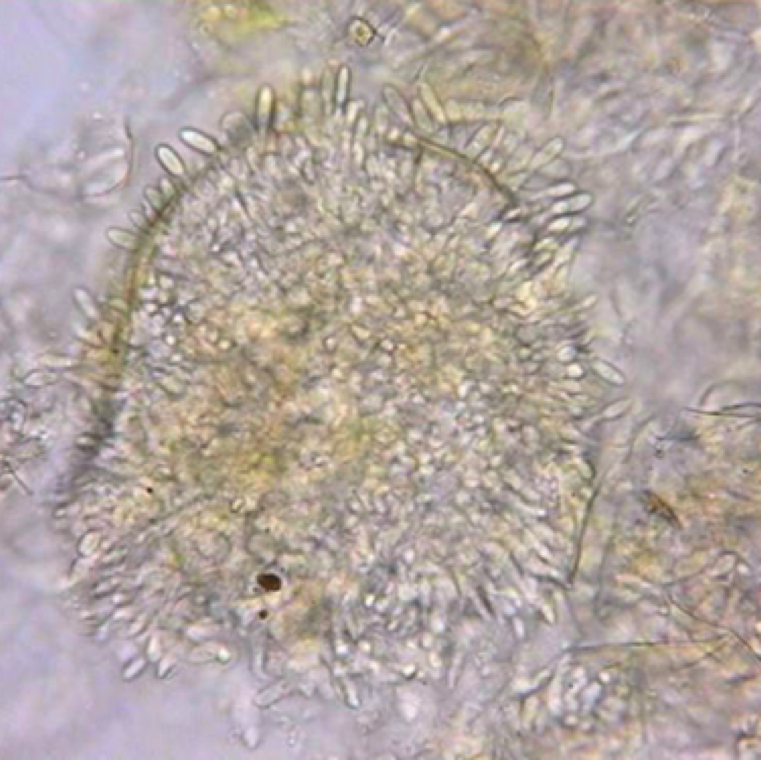


Anthracnose can affect all parts of pepper; however, the fruit is most commonly affected. The disease can enter a field through contaminated seed, transplants or from plant debris or weeds.
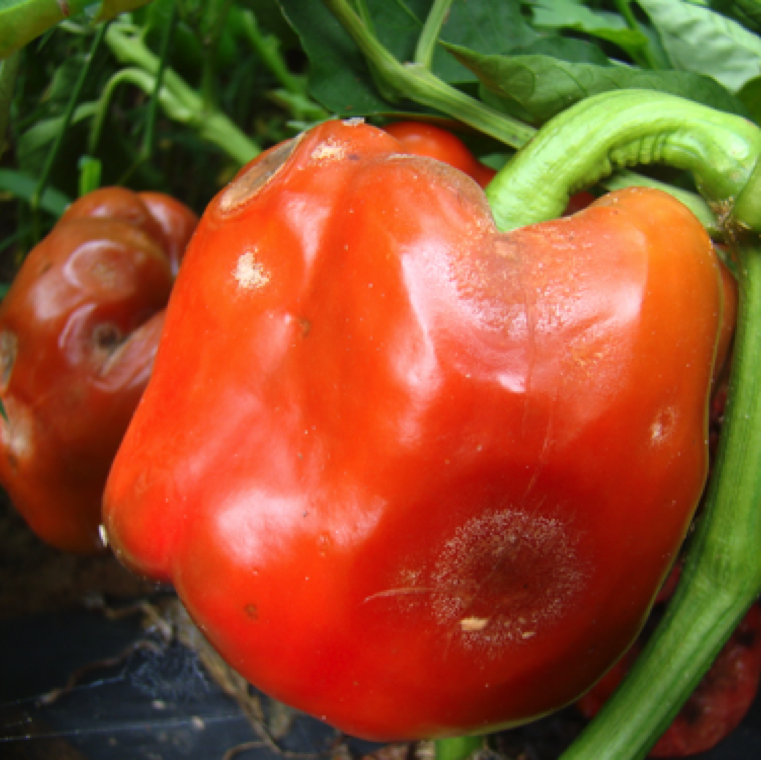
Symptoms on fruit begin as circular water-soaked lesions on fruits that have changed color that become soft, slightly sunken and eventually turn tan.
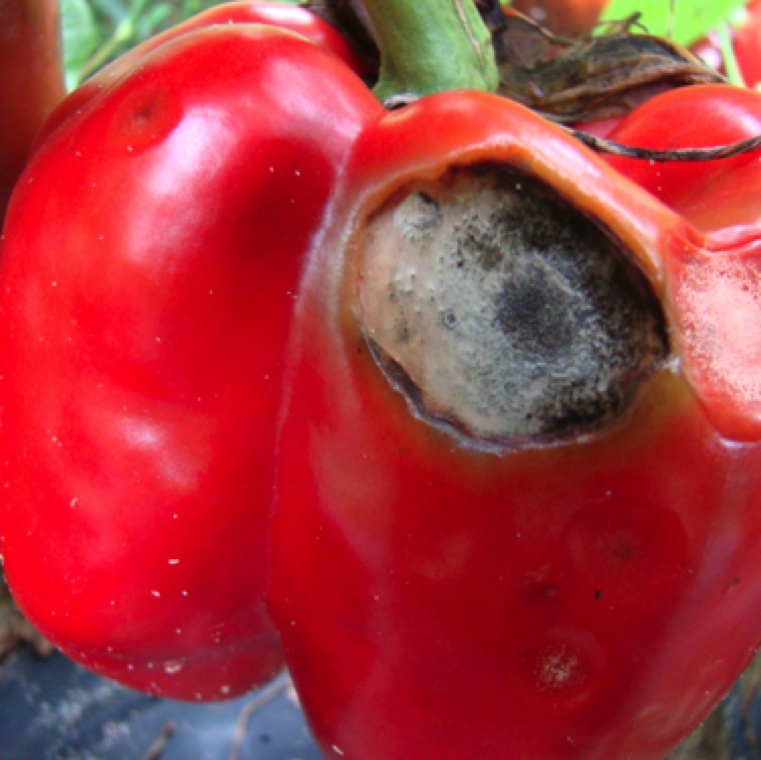
As the disease progresses lesions will enlarge and begin to produce acervuli (fruiting body) with salmon colored spores. These spores that are easily spread by rain splash.
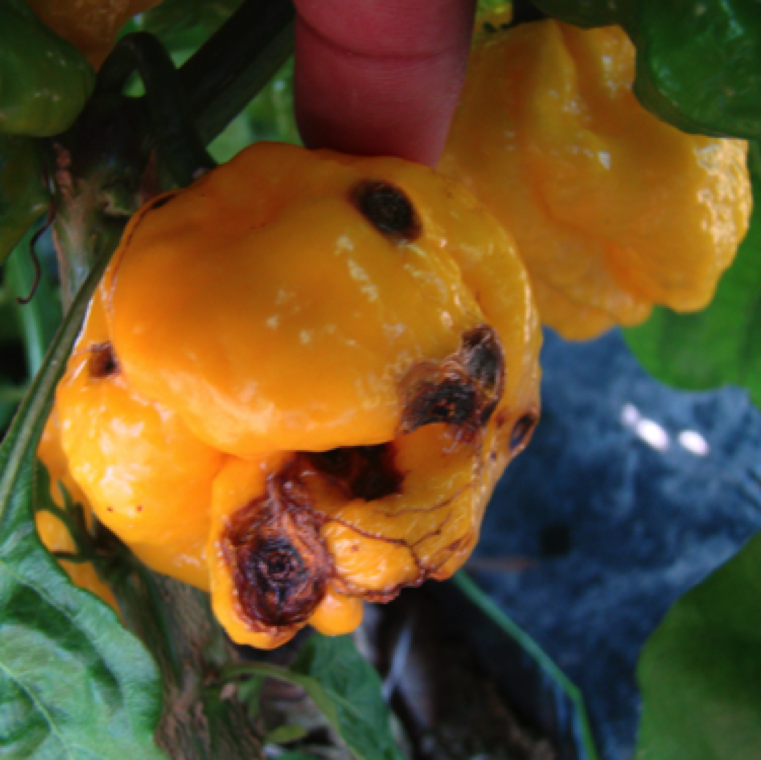
As lesions grow they may also begin to form concentric rings which can be tan to orange to black, depending on the age of the lesions a seen here on scotch bonnet pepper.
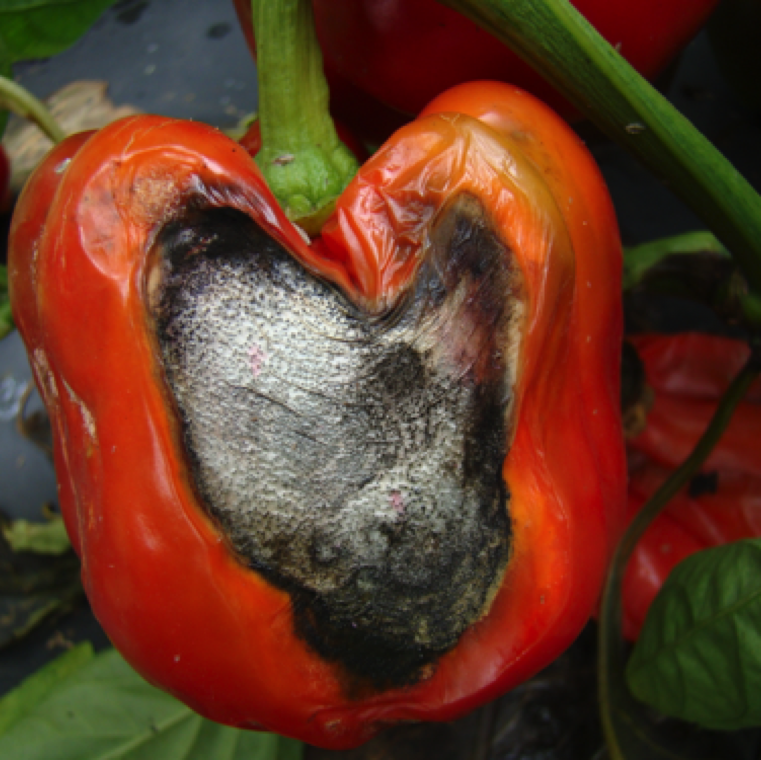
Lesions may cover most of the surface of the fruit and may become black in color due to the formation of acervuli (asexual fruiting body) and microsclerotia (survival structure).
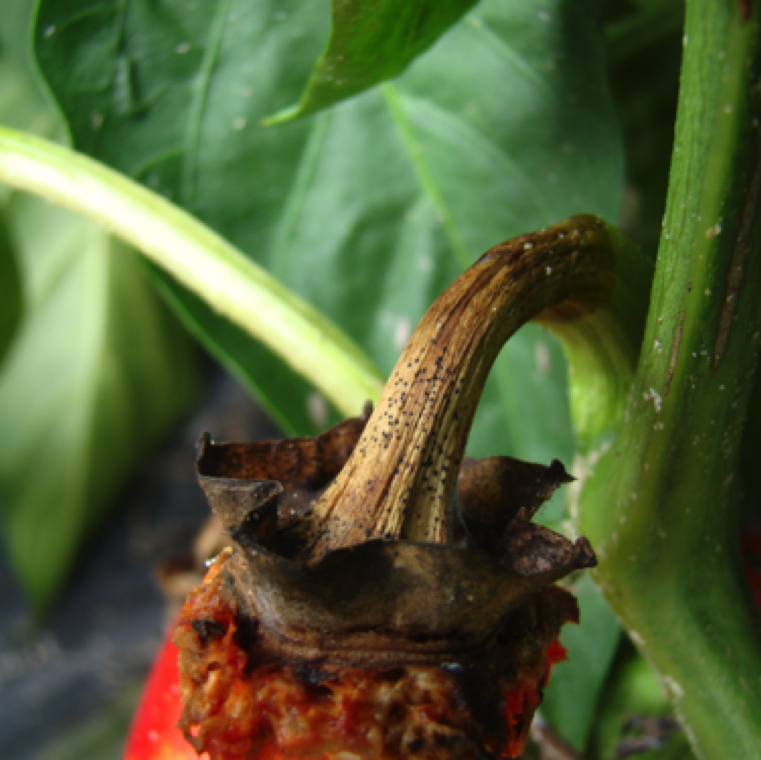
Microsclerotia and setae can be seen on peduncle of the fruit. Lesions can also be noticed on leaves and stem, but rarely seen than fruit lesions.
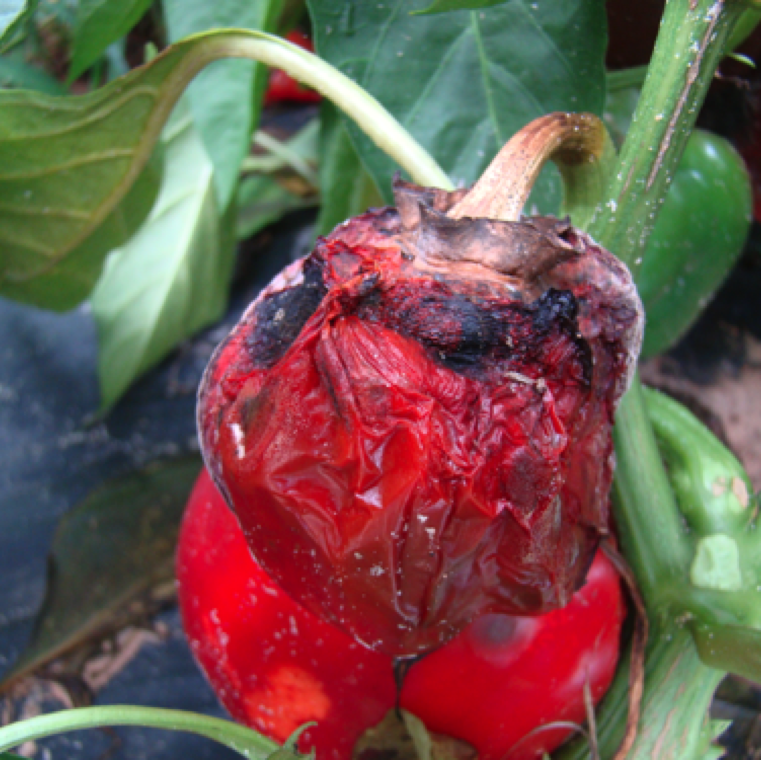
A fruit completely affected by anthracnose in the foreground and a fruit with early infection in the background showing characteristic symptoms of the disease.
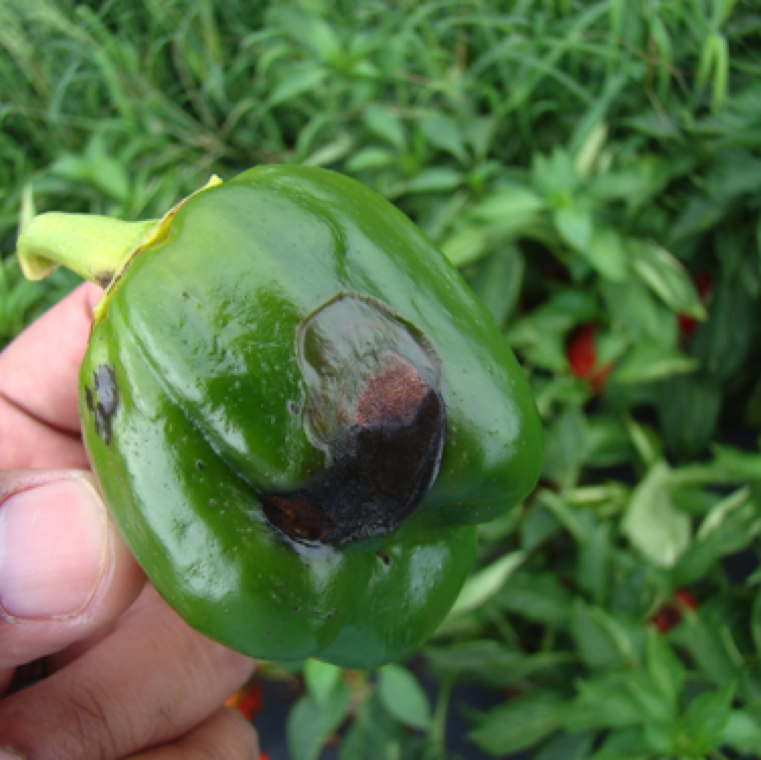
Lesion on the fruit typically are noticed during ripening stage/color change, but in rare cases can also be visible on fruits that are green during very high pathogen populations on plants.
ANTHRACNOSE
Fungal causal agent: Colletotrichum gloeosporioides, C. capsici and others
Pepper diseases
